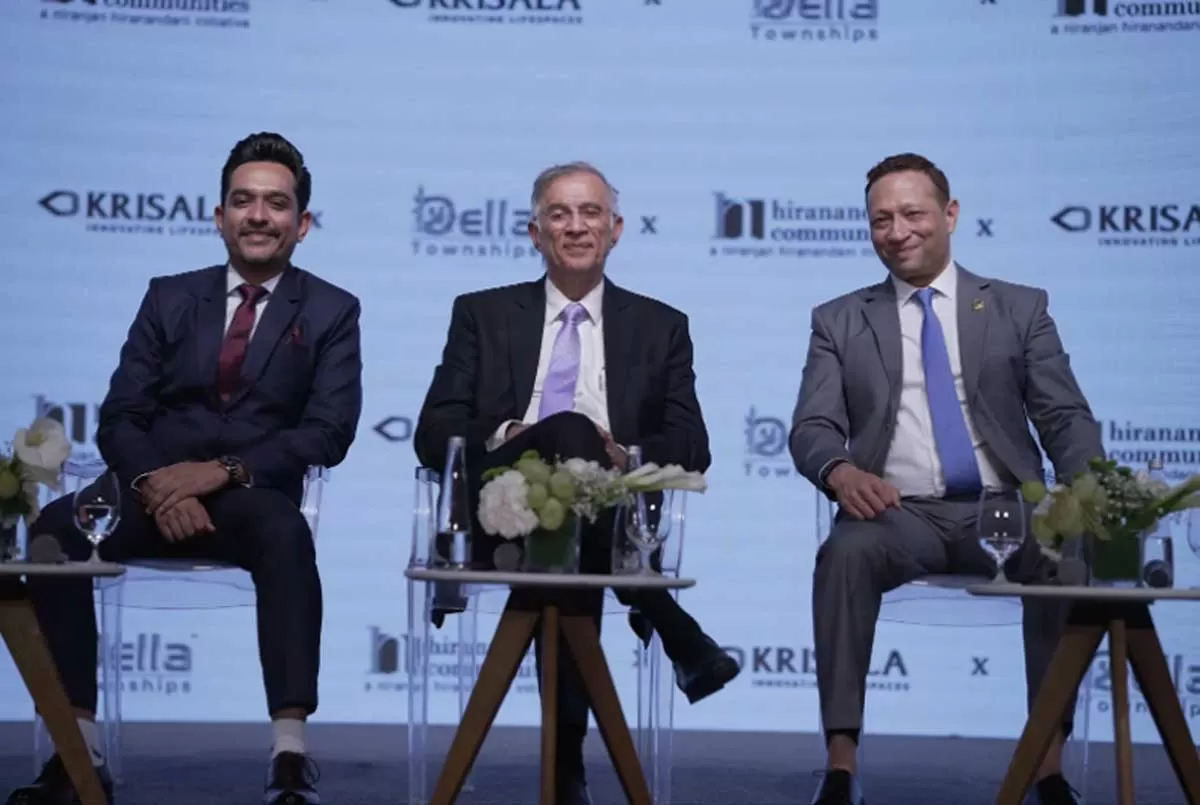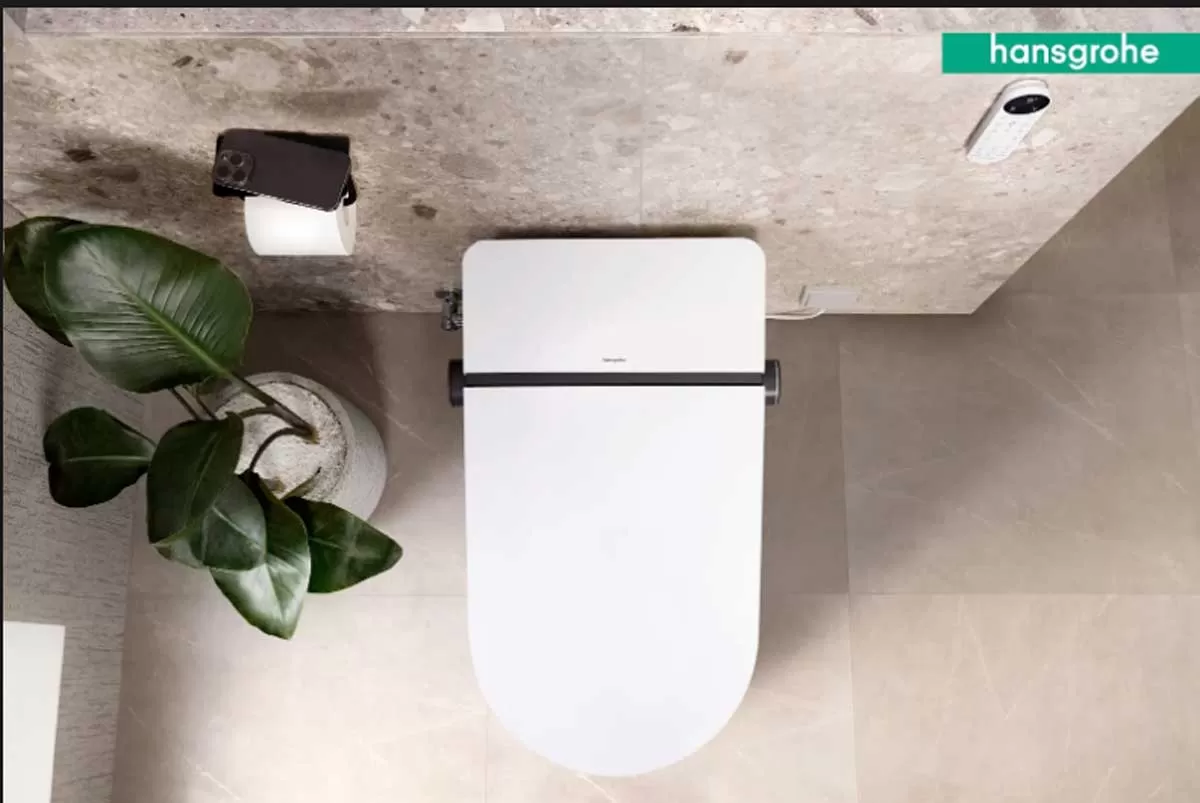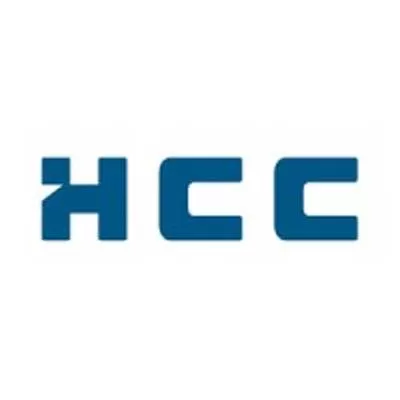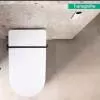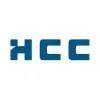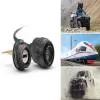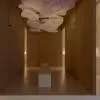Some realty segments are using less glass, others more and demanding specific panes, while premium metallic panels are making a statement in niche applications.Glass has long been considered the quintessential façade of modern commercial buildings. In India, with its use increasing over recent decades, the industry is currently estimated at Rs.150 billion. However, of late, the focus on sustainable building has given rise to concerns over the suitability of glass façades for the Indian climate. Remarkably, while this awareness appears to have pushed back the use of glass façades in commercial buildings, their use is growing in the residential sector, which traditionally used little glass!In recent years, the window-to-wall ratio (WWR) of commercial buildings has reduced from 40 per cent to around 30 per cent as developers grow wise to the need for greater energy-efficiency and to contain the heat-to-light ratio for greater occupational comfort, observes Piyush Srivastava, National Façade Manager, Schueco India. “Interestingly, in residential buildings, the converse is happening. Older residential buildings typically had less than 10 per cent WWR; this has increased to 18-22 per cent as more windows are incorporated into the design of living spaces and bedrooms for occupants to enjoy the view, feel connected with the external environment, and feel comfortable.”In residences, the higher WWR has increased demand for larger panes, tall panes (> 4 m), thin sections and slim interlocks, easy handling, less noisy panes (to open and close), automatic operations and digital provisions for safety, he adds. “In general, the demand for quality, engineered and tested products is increasing.”Glass is also making its way into applications such as shower cubicles and lift lobbies in residential buildings; as a result, the premium hardware and fittings market is increasing rapidly, shares Manish Sisodia, National Head-Glass Future, Saint-Gobain Glass India.Innovations for glass exteriorsProduct manufactures are working to satisfy new safety and performance requirements as per international standards, to ensure products perform against air and water in particular. Structurally, these aspects decide the quality of the product and its durability, says Srivastava.Schueco India has launched a thermally insulated “panoramic design” series of sliding doors, ASE 67 PD, to complement its highly successful non-insulated panoramic series, ASS 39 PD.NI. This new series will enable larger sized, heavier, sliding doors, with sleeker profiles and a premium appearance. “ASE 67 PD lends itself well to close to frameless designs sought by many discerning buyers while providing good thermal insulation,” observes Srivastava. Saint Gobain has launched electrochromic glass, called SageGlass, which makes for dynamic glazing that changes colour depending on the sun. “With electrochromic glass, occupants of buildings can experience higher comfort levels as the glass offers exceptional daylight and glare control,” explains Sisodia. Also, occupants can enjoy unobstructed views with lower energy costs without the need for traditional solutions such as blinds, shutters or low-emissivity glazing.Monte Carlo, an office building in Ahmedabad, has used SageGlass for glazing integrated with building management systems, thereby making controls highly customised for efficient user experience. In fact, Garvi Gujrat Bhawan in New Delhi, recently inaugurated by the Prime Minister, has used SageGlass for the skylight, which allows unobstructed views without heat and glare issues. Such applications lead Sisodia to say, “Whereas so far private developers have explored ways to use glass in commercial and residential buildings, we now expect more government buildings to be clad in modern building materials.”Façade panels and systemsCompetitors to glass in the façade market are aluminium composite panels and panels from multinational players such as FunderMax. FunderMax estimates the overall façade market, including both the branded and unbranded segments, at around 100 million sq m, growing at 7-8 per cent owing to the prevailing slowdown.The need for standardised systems has increased, according to Ashwani Khanna, AVP Marketing, FunderMax. “RERA has brought in more accountability and quality systems and fixtures are the need of the day. FunderMax, the original with its time-tested installation systems in India, has been a frontrunner in this area.”Façade panels play a major role in lending character to buildings, he adds, citing the Auspacious Convention Centre in Hyderabad as an example. “In particular, high-pressure laminates in accordance with EN 438-6 type EDF, manufactured with norm conformity of EN 438-7, are more suited for the various climatic conditions present in India. Max Exterior panels from FunderMax can be used for façade cladding, column cladding, soffits, louvers and various other applications, providing design freedom to architects and elegant and sustainable structures to building owners.”At the NITTE Meenakshi School of Architecture, Bengaluru, FunderMax panels have been used as louvers.A new solution from FunderMax, the Max Lato series is a shading system that aims to provide better visual comfort to occupants. It comes in different sizes and configurations and can be used to mitigate the effects of glare and heat ingress in different kinds of buildings located across the country. Another new system in the offering, the rivet-less soffit system from FunderMax, results in maximum material efficiency in addition to providing seamless aesthetics.Utility of metal façadesMeanwhile, Shivam Shukla, Director, Grand Façade Engineering, contends that the new products being released for glass façades don’t really constitute a new trend. He believes the glass façade industry is slow in coming up with genuinely new trends and, therefore, advocates the use of metal façades – he says stainless steel, mild steel and aluminium lend themselves well to carving by CNC laser or plasma cutting. “We can carve infinite CAD designs on metal, far more than what is possible on glass, in a variety of colours because metal can be powder or polyurethane-coated, and all for a lower cost than high-quality glass.” Even from the perspective of sustainability, strength and safety, metal façades have an edge over glass and aluminium composite panel façades, he elaborates. “Metal façades can last 30-50 years and far better withstand vandalism and a fire (CNC-cut metal façades can let out smoke).”End-users are always concerned about the energy-efficiency of buildings and in this respect, too, a metal façade scores higher than glass, according to Shukla, because its opacity blocks out sunlight, hence lowering the indoor temperature and the energy load, without compromising on letting in fresh air if the metal features a CNC-cut design. “With a CNC-cut design, a metal façade can almost act like a pair of lungs to a building.”Aluminium composite panels start to get distorted and bend after a couple of years of heat exposure, he adds. “In fact, aluminium composite panels are now increasingly being considered a suitable backdrop for a façade or for limited use (in a small area).”New speciality materialsWhile glass, aluminium composite panels, aluminium sheets and HPF sheets were popular choices, Architect Indrajit Kembhavi of Kembhavi Architects, says, “Now, the trend is shifting to varied tile and stone cladding, and speciality materials like zinc and titanium, and membrane systems, among others.”Aluminium is known for its resistance to rusting or blistering but the material is prone to denting and scratches and may corrode under certain environmental conditions if it is not properly maintained, explains Kembhavi. In comparison, special materials like zinc and titanium are lightweight, strong, and have a reflective appearance and self-healing properties, which means the material can form a thin layer of protective oxide film, increasing its resistance to corrosion, making it a low-maintenance cladding material. Membrane systems are the most flexible, easiest to work with and offer the most solutions in one package with good insulation properties. “Zinc and copper panels are later entrants to the façade market compared to aluminium panels,” observes Ashok Kumar Bhaiya, Chairman & Managing Director, Aludecor. “Zinc and copper panels are premium products because of their top-rated features and offerings, whereas aluminium panels are a mass product for which demand is ever-growing and evolving, from façades to interiors, for instance. Although we can achieve the appearance, precisely the colour, of zinc and copper panels with aluminium, the latter cannot offer the self-healing and antibacterial properties of zinc and copper panels. Affluent, discerning customers who don’t want lookalikes opt for genuine zinc and copper panels to make a style statement. From the durability perspective, zinc and copper are far more durable and recommended.”Infra development spurs use of innovative façades, glassThe focus on the development of infrastructure is creating scope for innovative façades and novel uses of glass. For instance, in designing a new railway station at Hubli, a first for having a large span, Architect Indrajit Kembhavi of Kembhavi Architects opted to give the building an airport-like appearance to be experiential for all classes of society. “Being public property, we also needed to consider, in particular, economy, as well as flexibility and sustainability. So we opted for toughened laminated glass, aluminium composite panels and galvanized aluminium sheets.”Earlier this year, Rishikesh’s iconic Lakshman Jhula, built in 1940, was declared unfit. It was closed and, simultaneously, a plan to build India’s first glass bridge near the Lakshman Jhula was unveiled. The new bridge is expected to be in place by Kumbh 2021. It will be made using Chinese glass. Incidentally, China is fairly advanced in glass bridge construction and is home to the Heibei glass bridge, the world’s longest glass-bottomed bridge boasting 1,077, 4-cm-thick glass panels, and the world’s highest glass-bottomed bridge, the 430-m-long Zhangjiajie glass bridge, with 99 panes of three-layer transparent glass. Glass bridges open up a new application of this versatile, environment-friendly construction material. “Glass has a huge role to play in the infra development of the country,” agrees Manish Sisodia, National Head-Glass Future, Saint-Gobain Glass India.Software to drive adaptive façades“In future, climate and technology will both play a major role in defining façades of the building,” opines Ruchi Mishra, DGM-Architect, Rudrabhishek Enterprises (REPL). For instance, she points out the role of software such as Rhino and Grasshopper in enabling architects to design and resolve parametric designs, and perform climatic and solar studies. Such studies enable architects to come up with complex designs with adaptive façades, which she sees as the future of commercial buildings and independent residences. However, “cost constraints will limit the mass usage of adaptive façades in group housing projects,” she adds.Sustainability to drive façade market“In general, we expect great demand for sustainable material for façades of all classes of buildings, commercial and residential, with the government being the main driving force behind such environment-responsive construction,” says Ruchi Mishra, DGM-Architect, Rudrabhishek Enterprises (REPL). Mishra expects huge demand for steel, metal, composite wood, glass fibre-reinforced concrete and similar hybrid materials, all of which are sustainable, green and versatile. However, she also expects continued demand for conventional materials such as brick, stone and glass. For instance, REPL used granite, travertine and sandstone for the site office of its Paarth Aadyant sample flat. At Paarth Aadyant residential towers, the company used glass-reinforced concrete jaalis and façade lighting. And it used high-pressure laminate cladding with curtain glass cladding for the Paarth Republic Site and Marketing Office.
